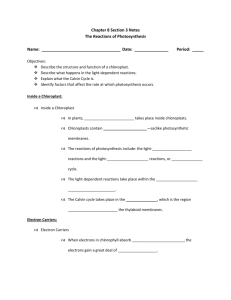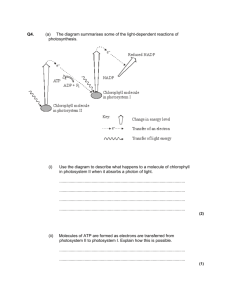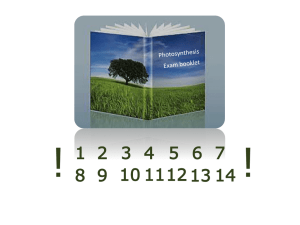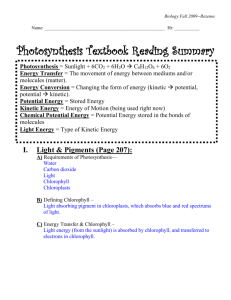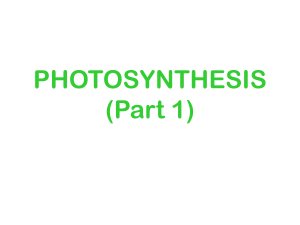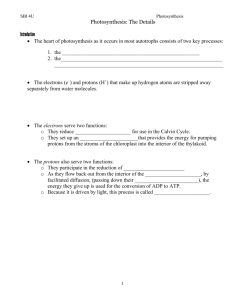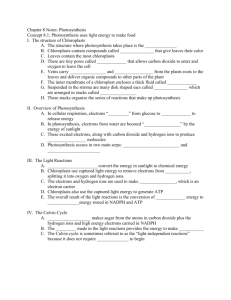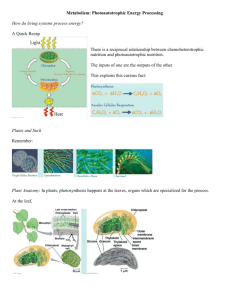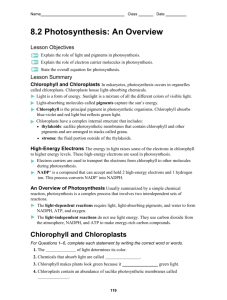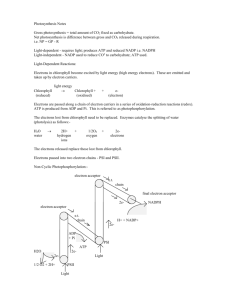summary - KScience
advertisement
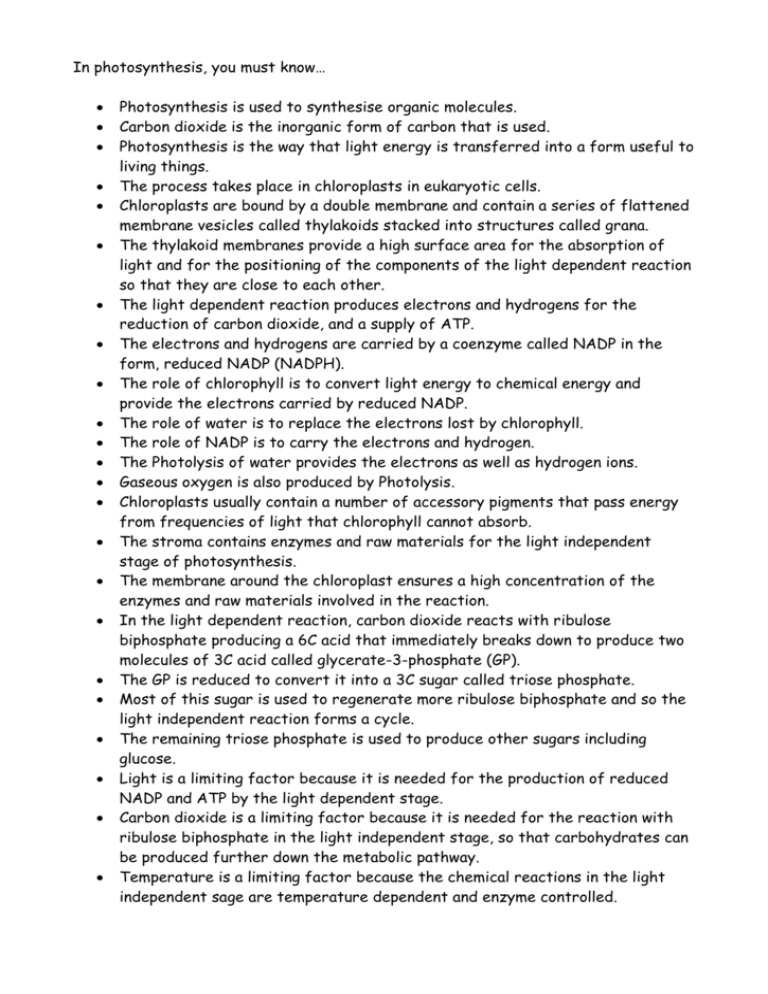
In photosynthesis, you must know… Photosynthesis is used to synthesise organic molecules. Carbon dioxide is the inorganic form of carbon that is used. Photosynthesis is the way that light energy is transferred into a form useful to living things. The process takes place in chloroplasts in eukaryotic cells. Chloroplasts are bound by a double membrane and contain a series of flattened membrane vesicles called thylakoids stacked into structures called grana. The thylakoid membranes provide a high surface area for the absorption of light and for the positioning of the components of the light dependent reaction so that they are close to each other. The light dependent reaction produces electrons and hydrogens for the reduction of carbon dioxide, and a supply of ATP. The electrons and hydrogens are carried by a coenzyme called NADP in the form, reduced NADP (NADPH). The role of chlorophyll is to convert light energy to chemical energy and provide the electrons carried by reduced NADP. The role of water is to replace the electrons lost by chlorophyll. The role of NADP is to carry the electrons and hydrogen. The Photolysis of water provides the electrons as well as hydrogen ions. Gaseous oxygen is also produced by Photolysis. Chloroplasts usually contain a number of accessory pigments that pass energy from frequencies of light that chlorophyll cannot absorb. The stroma contains enzymes and raw materials for the light independent stage of photosynthesis. The membrane around the chloroplast ensures a high concentration of the enzymes and raw materials involved in the reaction. In the light dependent reaction, carbon dioxide reacts with ribulose biphosphate producing a 6C acid that immediately breaks down to produce two molecules of 3C acid called glycerate-3-phosphate (GP). The GP is reduced to convert it into a 3C sugar called triose phosphate. Most of this sugar is used to regenerate more ribulose biphosphate and so the light independent reaction forms a cycle. The remaining triose phosphate is used to produce other sugars including glucose. Light is a limiting factor because it is needed for the production of reduced NADP and ATP by the light dependent stage. Carbon dioxide is a limiting factor because it is needed for the reaction with ribulose biphosphate in the light independent stage, so that carbohydrates can be produced further down the metabolic pathway. Temperature is a limiting factor because the chemical reactions in the light independent sage are temperature dependent and enzyme controlled.


